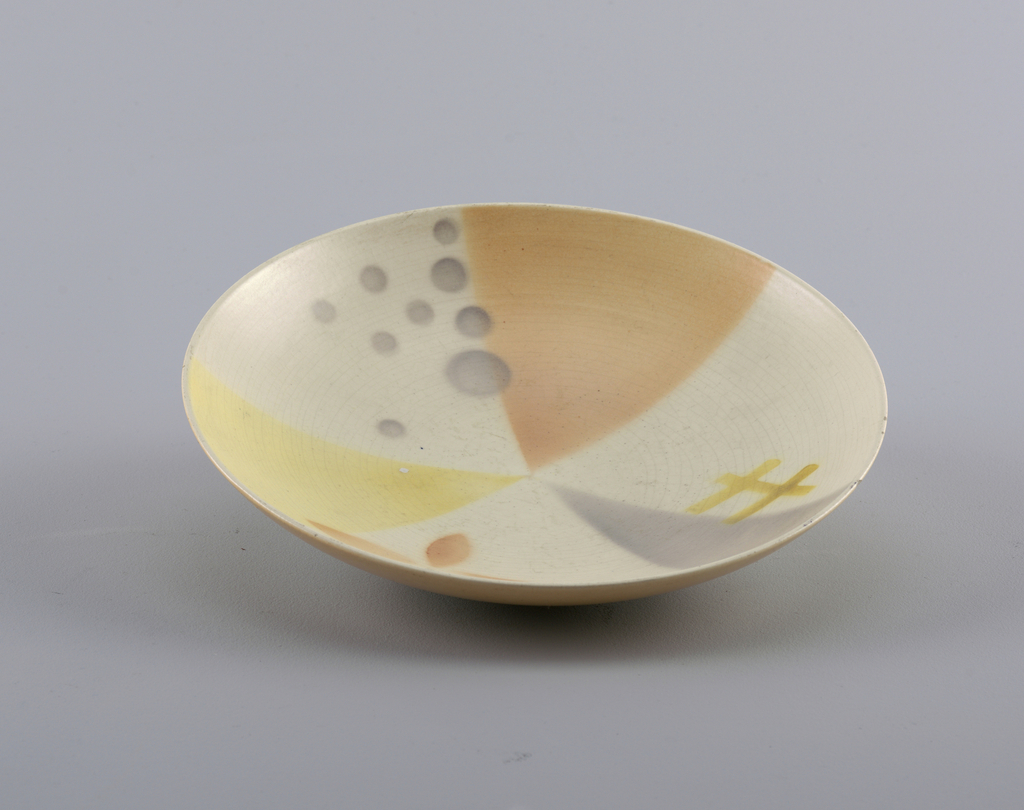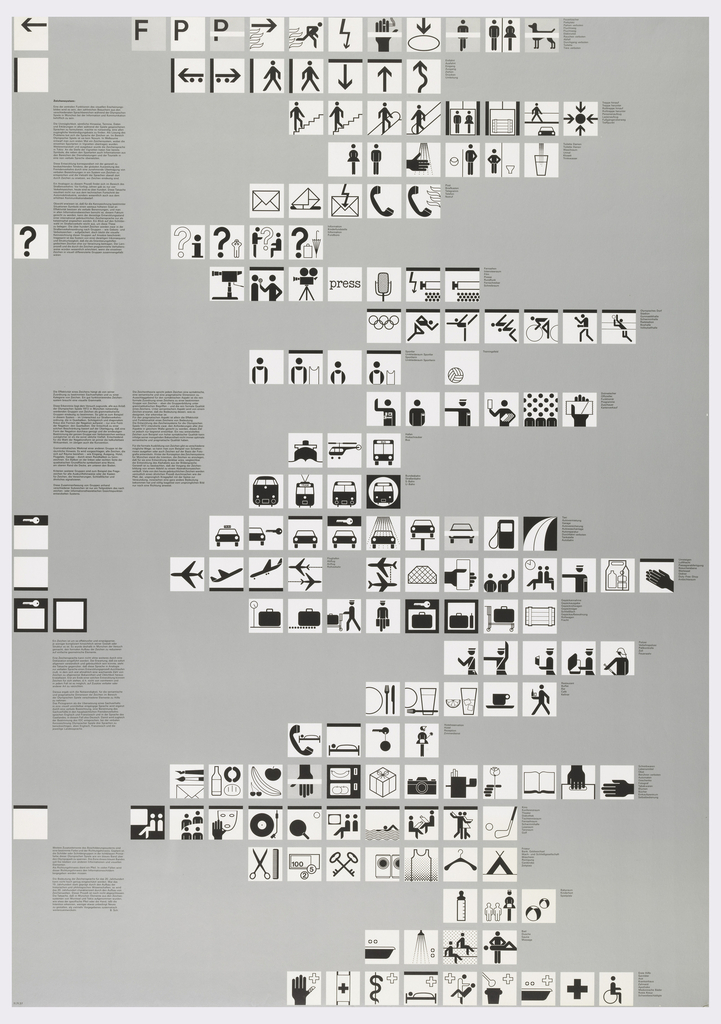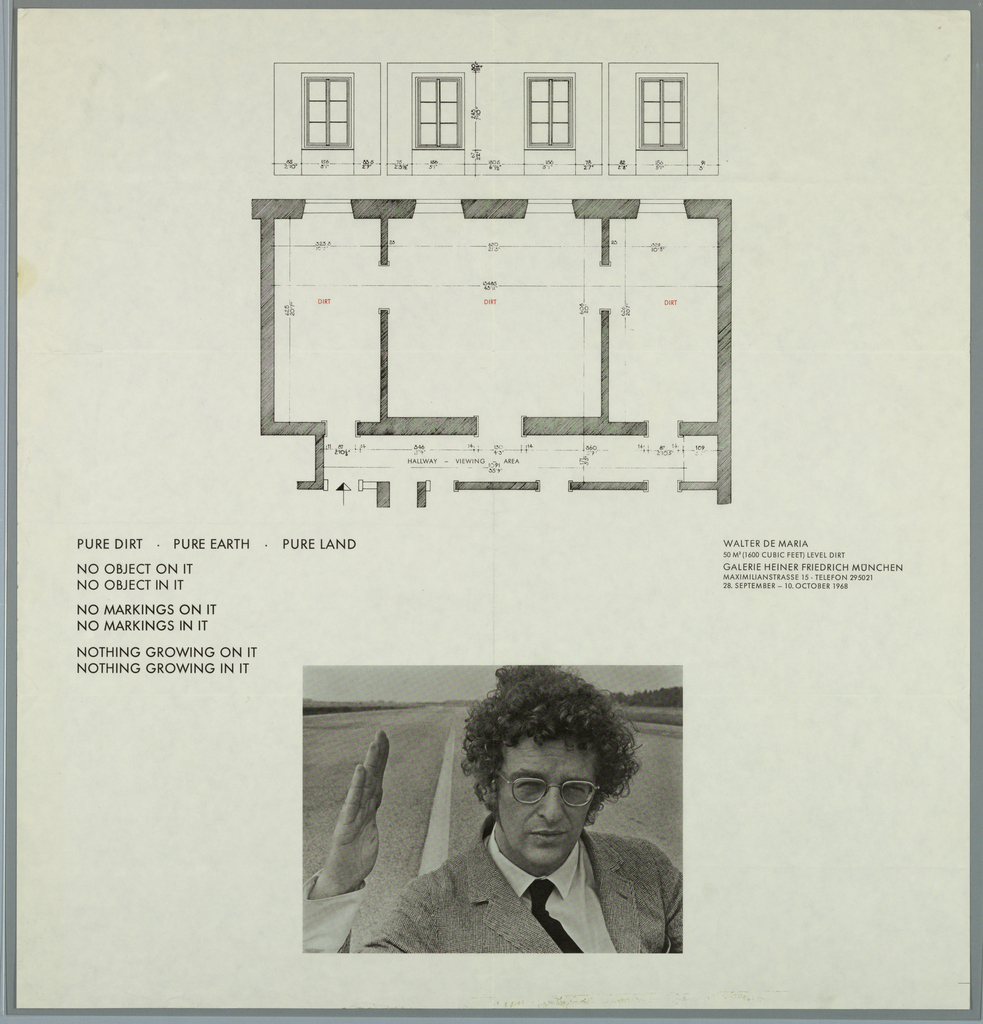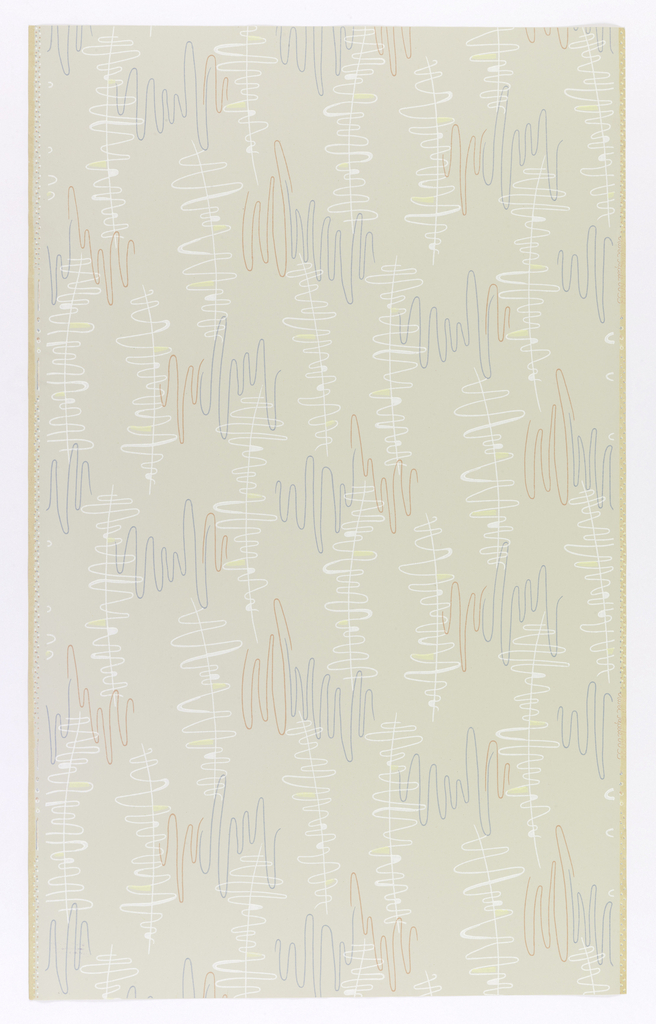A compressor rumbling. A nozzle hissing. The colorful geometric shapes decorating this otherwise straightforward dish were not painted by hand. Rather they were applied by a device novel to the world of ceramics: the airbrush. The important and prolific German designer, Martha Katzer (1897–1947), created this dish for the Karlsruhe Majolika Manufaktur (KMM) in Baden,...
In 1966, the influential German designer, Otl Aicher (1922–1991), was hired to design the 1972 Munich Olympic Games’ iconography, language, and overall graphic scheme. By this time, Aicher had worked to modernize brands like Braun (1956–66) and Lufthansa (1962–64) and was a co-founder of the Ulm College of Design, a school established upon a post-war...
“THE DIRT (OR EARTH) IS THERE NOT ONLY TO BE SEEN BUT TO BE THOUGHT ABOUT!” Walter de Maria stated in the press release for the first installation of his influential Earth Room at the Galerie Heiner Friedrich Gallery in Munich, Germany in 1968. The show, titled “Walter de Maria The Land Show: Pure Dirt...
The Cooper Hewitt has over 50 wallpapers by the little-known German company Hosel Tapeten. Centered in the town of Hosel, situated partway between Düsseldorf and Essen in the northwest of the country, the company’s output was very typical of post-World War II German papers. The period saw an increase in the amount of cheap, mass-produced...
During its first wave of influence, the sinuous and sensuous curves of rococo rapidly spread across France, Holland, and Germany,developing a unique personality in each location. Cooper-Hewitt invites curators Henry Hawley, Reinier Baarsen, and Wolfram Koeppe to a panel discussion that examines the diaspora of rococo during the eighteenth century, and the regional differences in...
On May 14, 2009, Cooper-Hewitt opens Design for a Living World, an exhibition developed by The Nature Conservancy, one of the world’s leading conservation organizations. As part of our partnership with TNC, Cooper-Hewitt met the challenge of publishing a companion book that would emphasize the exhibition’s principal themes: sustainable design and materials, and responsible conservation...




